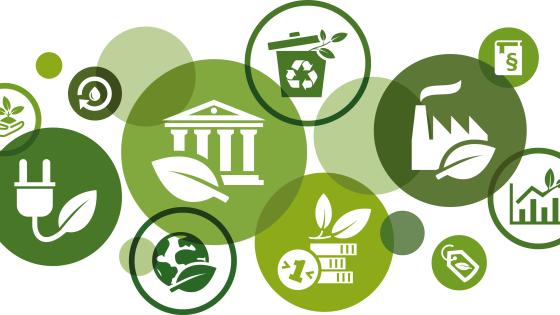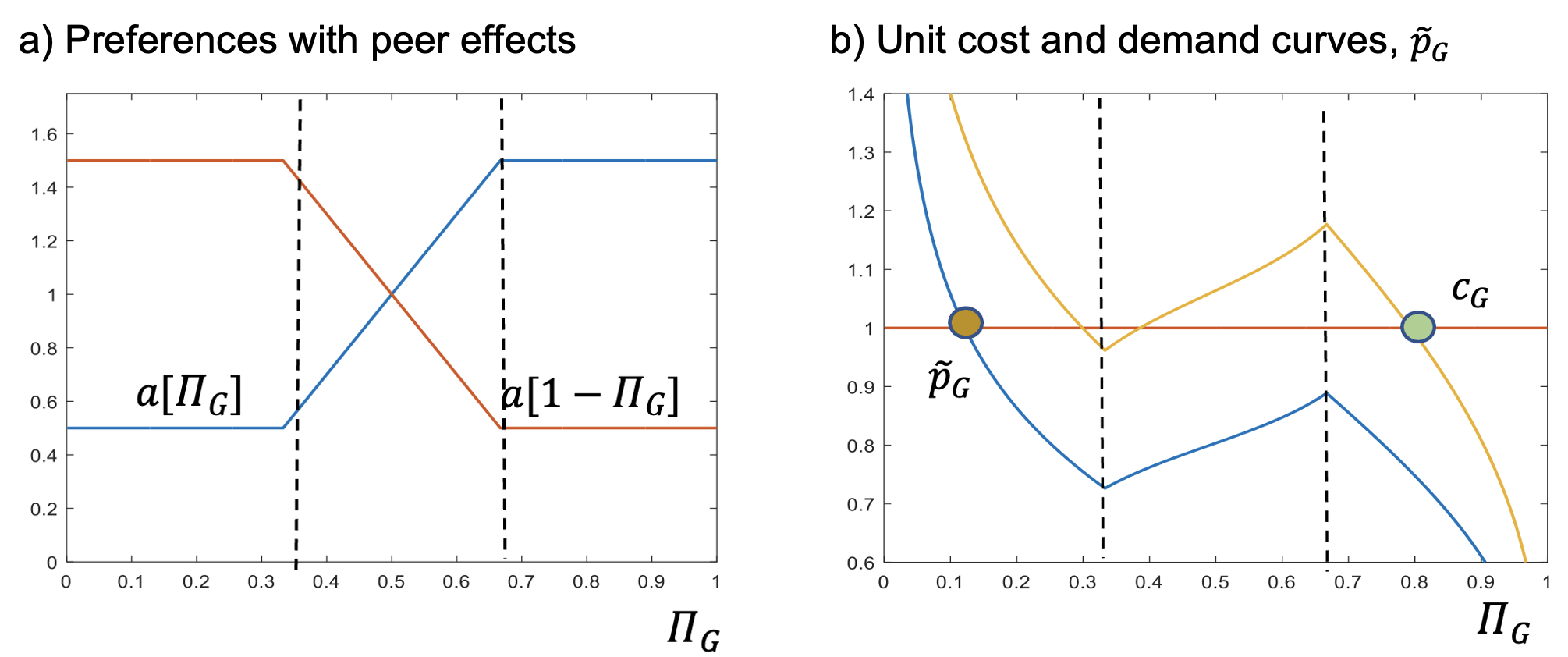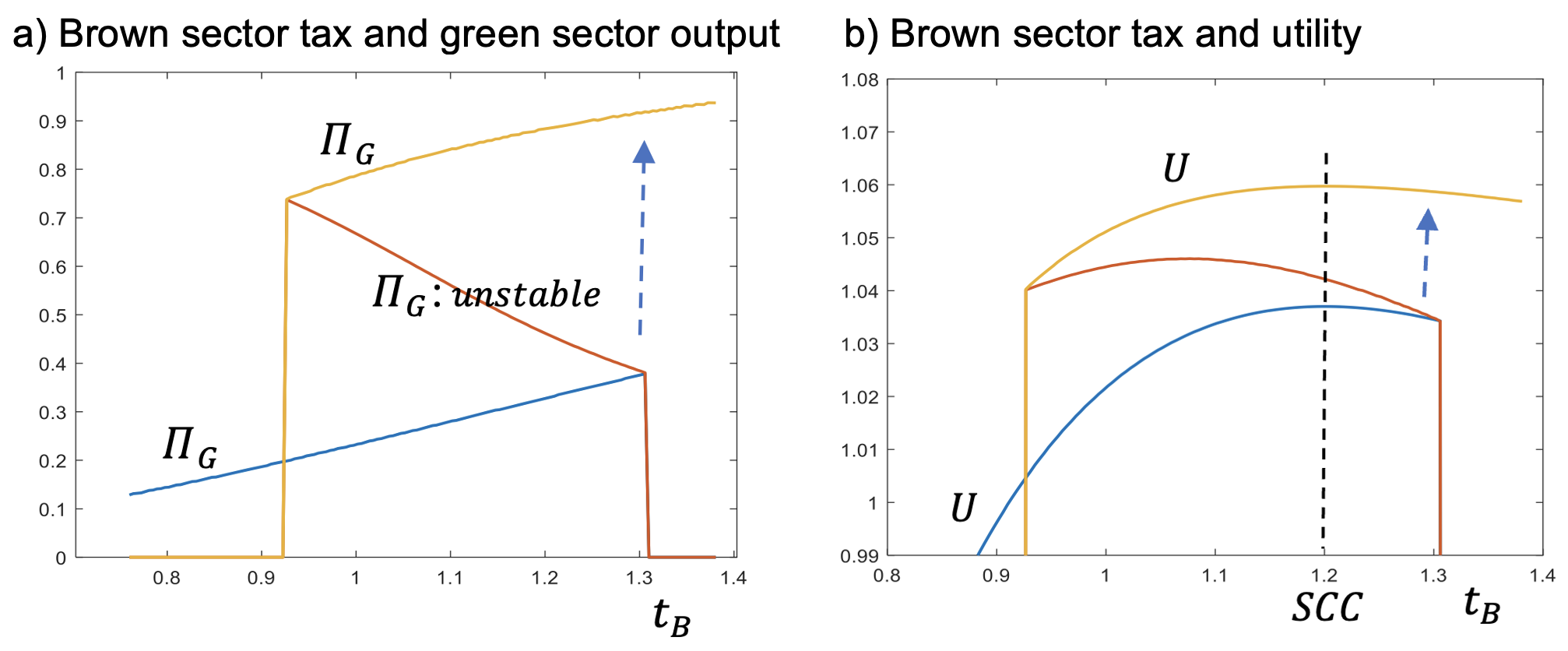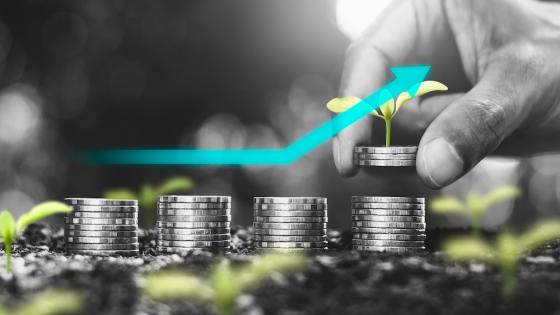The transition to net zero involves radically changing the technologies that are used to produce goods, services, and final consumption. For example, car owners will have to shift from cars with internal combustion engines (ICEs) to electrical vehicles (EVs), provided electricity is generated from renewable energies. House owners will have to switch from gas heating and cooking to heat pumps. Steel factories must change to technologies that can operate on green hydrogen (produced from solar or wind energy) rather than coal. Aluminium producers will have to change from carbon anode to inert carbon technologies resulting in substantial reduction of carbon emissions in the smelting process. Many of these new technologies are revolutionary and subject to strong returns to scale and learning by doing. The challenge is thus not to incrementally make a carbon-intensive process a little cleaner by pricing emissions via a carbon tax or a system of marketable permits, but to have a radical policy that incites the switch from existing carbon-intensive to breakthrough carbon-free technologies.
Peer effects in demand
These switches in technologies are the choices of individual households and firms but are not choices that are made in isolation. Choices are often influenced by peer effects, as our preferences are shaped by the behaviour of those around us (e.g. Gillingham and Bollinger 2021, Talevi 2022, Boucher et al. 2022). The opportunities we face depend on the investments and innovation undertaken by others. Thus, in choosing between electric vehicles and internal combustion engines, for example, we are influenced by neighbours’ choices, by network effects created through development of a charging network, by the range of models offered by manufacturers, and by technological innovation in the quality of the alternatives. These forces often create strategic complementarities (positive feedback effects), such that one individual’s choice of an electric vehicle makes it more attractive for others to make the same choice. This is the opposite of standard textbook reasoning in which an individual’s choice makes it less attractive for others to do the same (e.g. by bidding up the price of the chosen good).
Carbon pricing is inadequate
How should the presence of peer effects and other complementarities shape the design of climate policy, in particular the use of tax and subsidy instruments on brown versus green products? The traditional policy advice of economists has been to internalise the damages caused by carbon emissions by imposing a global carbon tax (or competitive market for emissions permits) that is set equal to the social cost of carbon (SCC), i.e. the expected present discounted value of all global warming damages resulting from emitting one ton of carbon today (e.g. Nordhaus 2008). But this policy advice misses the point that strategic complementarities are the dominant force in much of the green transition, precisely because the switch to new ways of doing things is so heavily – and positively – dependent on the activities of others.
Setting the carbon price equal to the social cost of carbon may be wholly inadequate for a successful green transition due to the prevalence of positive feedback effects in preferences, technology, and politics. Instead, what is needed is non-marginal, transformative change to shift the economy, technology, and society from a bad, high-emissions equilibrium to a better, low-emissions equilibrium. Such a shift requires a change in technologies and once the change has been made, households and producers get locked into the new green technologies. Marginal policies such as setting the carbon price to the social cost of carbon may simply achieve a local maximum around the polluting equilibrium that we are in currently.
Switching technologies requires radical policies
The simplest framework in which to demonstrate this is a micro-founded model of peer effects, in which people choose either a green or a brown durable good. Our model extends earlier work on social norms and the need to change the equilibrium (e.g. Nyborg 2020). Peer effects imply that the number of people who have chosen green durable goods (e.g. electric vehicles) increases the value to others of making the same choice. The mechanisms are illustrated in Figures 1a and 1b below and developed in full in van der Ploeg and Venables (2022). The proportion of the population purchasing the green durable good is shown on the bottom axes and the value of this good is the blue line in panel (a), where the upwards sloping section exhibits positive peer (or similar network) effects, i.e. the value is increasing with the number of purchasers. The red line is the value of purchasing the brown durable good (e.g. an internal combustion engine), constructed, for simplicity, with symmetric loss of value as these brown goods go out of fashion.
Embedding these preferences in a simple model of consumer choice (constant elasticity of substitution preferences between types) gives the blue demand curve in panel (b), measuring willingness to pay for the green durable good. This is downward sloping except where peer effects are strong enough that people become willing to pay more for the green good, the more people are already purchasing it. The supply curve is the red line in panel (b) (the price at which the green good is supplied, horizontal for simplicity) and the proportion of the population purchasing green in equilibrium is at the intersection of these curves. We call this point the brown equilibrium – few people are purchasing green durable goods, and positive peer effects have not cut in.
Figure 1
Notes: Peer effects in preferences can cause the demand curve to slope upwards, creating the possibility of multiple equilibria.
Policy could subsidise the green good, which would shift the cost of this purchase down, or tax the brown good, switching expenditure to green and raising the demand curve towards the yellow curve on Figure 1b. As the demand curve is shifted up so it comes to have three intersections with supply and thus three potential equilibria. The brown equilibrium has become slightly greener (moving the right). More importantly, there is now a green equilibrium, at a higher value of the proportion of the population purchasing the green durable good. (The middle equilibrium is unstable and can be ignored). The policy challenge is to bring about the transition, i.e. the switch from the brown to the green equilibrium. Doing so requires coordinated action – people want to consume green durable goods if others are consuming green. This could be achieved by quantity measures, such as restricting sales of the brown durable good, or by taxation, in which case the tax on the brown durable good must be high enough to destroy the brown equilibrium, raising to a level just above that illustrated on Figure 1b. A more radical alternative is to set a date by which brown technologies are no longer permitted to be sold and a phase-out date.
The effect of varying the tax on the brown durable good is illustrated in Figures 2a and 2b which have this tax rate on the horizontal axis. Figure 2a traces out the production and purchase of the green good as this tax varies. The brown equilibrium is in blue; the green equilibrium is in yellow. There is a range of taxes on the brown goods for which both equilibria are possible. The tipping point is illustrated by the vertical arrow – the point at which the brown equilibrium is destroyed as willingness to pay for the green good comes to exceeds its price. There is then a sudden big jump in the people who switch from brown to green durable goods (the jump upwards from the end of the blue line to the yellow line). Utility and welfare also jump up at this point as can be seen in Figure 2b. Once the switch to the new equilibrium has been made, the policy of taxing the brown good can be relaxed. In this sense, the green transition requires a temporary ‘big push’ to move from the bad, high-emissions to the good, low-emissions equilibrium.
Figure 2
Notes: Utility maximisation requires a tax high enough to flip from the dirty equilibrium (blue line) to the clean equilibrium (yellow). In this example the tax exceeds the Pigouvian rate.
How does this tax on brown goods relate to taxation of emissions at rate equal to the social cost of carbon? Figure 2b uses the model to derive consumer utility in each of the equilibria, including a utility loss from emissions produced by the brown good. The point social cost of carbon maximises utility in both the brown and the green equilibria, in line with the usual policy recommendation. But policy should seek to attain the green equilibrium, yielding higher utility, and this requires moving beyond the tipping point, indicated again by the vertical arrow. In short, setting the carbon tax to equal the social cost of carbon is – in this example – insufficient to secure the green transition and associated higher level of utility. The focus in climate economics on incremental carbon pricing should thus be shifted to one on the big push policies that are required to obtain the required shifts in technologies.
Network and learning by doing effects also require radical climate policies
The figures above sketch the need for transformative policies to have a successful green transition for the simplest example, in which preferences are shaped by the actions of peers. The arguments apply in a wider range of contexts, including the presence of network effects, circumstances where the green good is subject to increasing returns and learning by doing, or where an incumbent brown technology is subject to ‘lock-in’ because of the advantage of an ecosystem of suppliers and skills. In each of these cases complementarities between the actions of different firms, households, and government agencies, can make the transition ‘non-marginal’, as seen above. Earlier work has recognised the importance of path dependency in economies with directed technical change and the resulting need for a temporary hike in renewable technologies (Acemoglu et al. 2012, Aghion et al. 2016, 2021).
The analytical framework can be extended to address explicitly the dynamics of transition, in which expectations play a crucial role. Optimistic and pessimistic expectations can both be equilibrium outcomes, the former leading to the green outcome, the latter the brown. Tax or subsidy policy can act to remove the pessimistic outcome, as is the case in the example above, or policy can operate directly on expectations using forward guidance regarding future green policies.
Policy implications
All these cases depend on the presence of several market failures – the global warming externality plus some other interactions that create the complementarity. The theory of targeting suggests that ideally a separate instrument should be used to address each of these failures. The practical difficulties of this – and of identifying the exact policies needed to reach a tipping point – are evident. Our central point is however that, whatever instruments are used, to make a non-marginal change such as the transition to green durable goods and technologies, economists and policymakers need to think in ways that go well beyond the standard recommendations based on marginal change. This may require a search for sensitive intervention points to leverage peer effects in demand and network and learning by doing effects in the production of green technologies (e.g. Abson et al. 2017, Farmer et al. 2019, Chapin III et al. 2022). To enable a switch to green preferences (and technologies), politicians must overcome the problem that they cannot commit actions of future policymakers (Besley and Persson 2019, 2020, 2021). It is helpful then to invest in green technologies that tie the hands of political successors (Harstad 2020). Politicians also need to solve the coordination problem to guide the economy and ensure that self-fulfilling expectations lead to the low-emissions equilibrium (e.g. Bretschger and Schaefer 2017, van den Meijden and Smulders 2017, Smulder and Zhou 2020).
The key is that the search for uniform carbon pricing throughout the global economy is unlikely to be successful due to the ugly free-riding problems facing the global economy trying to curb emissions (e.g. Barrett 2023). The top-down policy architecture must be replaced by bottom-up initiative of the public and private sectors (Snower 2022). A directed push to switch from carbon-intensive to carbon-free technologies is therefore much more likely to yield the desired outcome of a net-zero economy. This requires leveraging social, technological, economic, and political tipping points. Since innovators (diffusors) of disruptive environmental technologies are less likely to receive bank credit compared to non-disruptive counterparts (Roukny et al. 2022), policy may be needed to elicit the required finance to move from the high-emissions to the low-emissions equilibrium. To make the switch to carbon-free technologies, funds must be raised to help developing countries in this task by frontloading climate mitigation expenditures (Kraemer et al. 2022).
References
Abson, D J, J Fischer, J Leventon, J Newig, T Schomerus, U Vilsmaier, H von Wehrden, P Abernethy, C D Ives, N W Jager and D J Lang (2017), “Leverage points for sustainability transformation”, Ambio 46: 30-39.
Acemoglu, D, P Aghion, L Bursztyn and D Hemous (2012), “The environment and directed technical change”, American Economic Review 102(1): 131-166.
Aghion, P, A Dechezleprêtre, D Hémous, R Martin and J van Reenen (2016), “Carbon taxes, path dependency, and directed technical change: evidence from the auto industry”, Journal of Political Economy 124(1).
Aghion, P, R Benabou, R Martin and A Roulet (2021), “Environmental preferences and technological choices: is market competition clean or dirty?”, American Economic Review: Insights, forthcoming.
Barret, S (2023), “Getting to zero requires a Big Push: technology switching treaties and the energy transition”, mimeo, Columbia University and the London School of Economics.
Besley, T and T Persson (2019), “The dynamics of environmental politics and values”, Journal of the European Economic Association 17(4): 993-1024.
Besley, T and T Persson (2020), “Escaping the climate trap: values, technologies, and politics”, mimeo, LSE, London, U.K.
Besley, T and T Persson (2021), “Science as civil society: implications for a green transition”, CEPR Discussion Paper No. 16840.
Bretschger, L and A Schaefer (2017), “Dirty history versus clean expectations: can energy policies promote momentum for growth?”, European Economic Review 99: 170-190.
Boucher, V, M Rendall, P Ushchev and Y Zenou (2022), “Toward a general theory of peer effects”, CEPR Discussion Paper No. 17315.
Chapin III, F S, E U Weber, E M Bennett, R Biggs, J van den Bergh, W N Adger, A-S Crépin, S Polasky, C Folke, M Scheffer, K Segerson, J M Anderies, S Barrett, J-C Cardenas, S R Carpenter, J Fischer, N Kautsky, S A Levin, J F Shogren, B Walker, J Wilen and A J de Zeeuw (2022), “Earth stewardship: shaping a sustainable future through interacting policy and norm shifts”, Ambio 51: 1907-1920.
Farmer, J D, C Hepburn, M C Yves, T Hale, T Wetzer, P Mealy, R Rafaty, S Srivastav and R Way (2019), “Sensitive intervention points in the post-carbon transition”, Science 364 (6436): 132-134.
Gillingham, K T and B Bollinger (2021), “Social learning and photovoltaic adoption”, Management Science 67(11).
Harstad, B (2020), “Technology and time inconsistency”, Journal of Political Economy 128(7): 2653-2689.
Kraemer, M, U Volz and D Schoenmakers (2022), “Build now, pay later: frontloading poor countries’ climate mitigation expenditures”, VoxEU.org, 11 October.
Meijden, G van den and A J Smulders (2017), “Carbon lock-in: the role of expectations”, International Economic Review 58(4): 1371-1415.
Nordhaus, W (2008), A Question of Balance: Weighing the Options on Global Warming Policies, Yale University Press.
Nyborg, K (2020), “No man is an island: social coordination and the environment”, Environmental and Resource Economics 76: 177-193.
Ploeg, F van der and A J Venables (2022), “Radical climate policies”, CEPR Discussion Paper No. 17677.
Roukny, T, J Tielens and H Degryse (2022), “Asset overhang, and the financing of climate change technology”, VoxEU.org, 24 August.
Smulders, S and S Zhou (2020), “Self-fulfilling prophecies in directed technical change”, mimeo, Bundesbank.
Snower, D (2022), “A fresh approach to climate action”, VoxEU.org, 15 November.
Talevi, M (2022), “Keeping up with the neighbours or learning from them? The role of peer effects in the diffusion of residential solar PV”, mimeo, VU Amsterdam.





